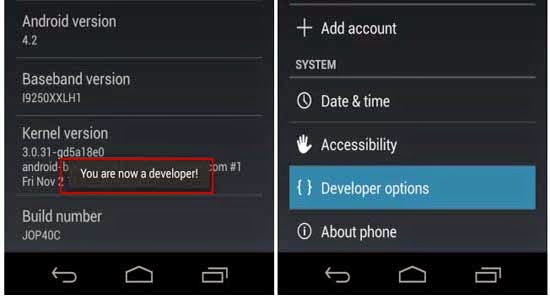If you desire to take a bit more control of your Android device, but aren’t sure where to start, might we suggest looking at Android’s built-in Developer Options?
Let’s quickly look at how to enable Developer Options, then we’ll backtrack and discuss why exactly you would want to enable these features and what you can do with this new found power.
The following steps are for a vanilla Android experience, based on Android 4.4.4 KitKat. If you have another version of Android installed, we cannot guarantee that Developer Options will be available, but chances are they are in there somewhere. Let’s do this.
1) Open up your main system Settings.
2) Scroll down, all the way to the bottom to find About Phone (or About Tablet.)
3) Scroll down again and find the entry with Build number.
4) Start tapping on the Build number entry, Android will now pop up a message informing you that in x amount of clicks, you will become a Developer. Keep tapping away until the process is complete. Well, we can forget about an education and work experience if tapping a button a few times is all it takes to become an Android developer! I’m kidding of course.
With that out of the way, head on back to the main system Settings and you will now see Developer options listed. For me it was the second to last entry.
What are Developer Options good for?
Allow me to begin with a warning. Developer Options contains a number of items that truly are for trained professionals. Please do not change anything if you do not understand what it is or does. At the very least, take note of the default setting and be prepared to come change things back if anything goes wrong.

Now, as the name implies, Developer Options are a set of tools and settings designed to assist an app developer in optimizing their products and tracking down errors. For example, the option called Pointer location provides a precise reading of user input. While this is great for a developer that needs to understand touch location and movement, the overlay is fairly unusable for your everyday computing. Instead, perhaps Show touches would work for you. You’ve seen the result of Show touches before, it is that little white dot that is present in many of our Android customization articles.

0 comments:
Post a Comment